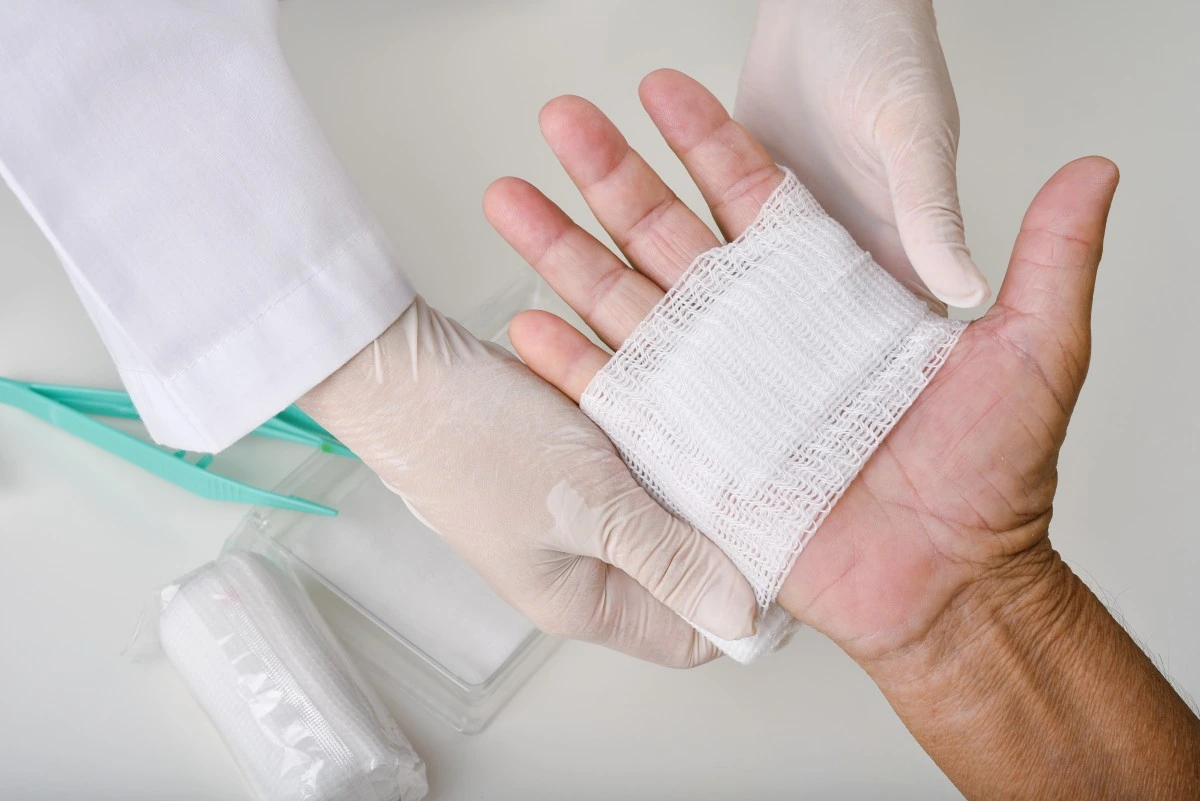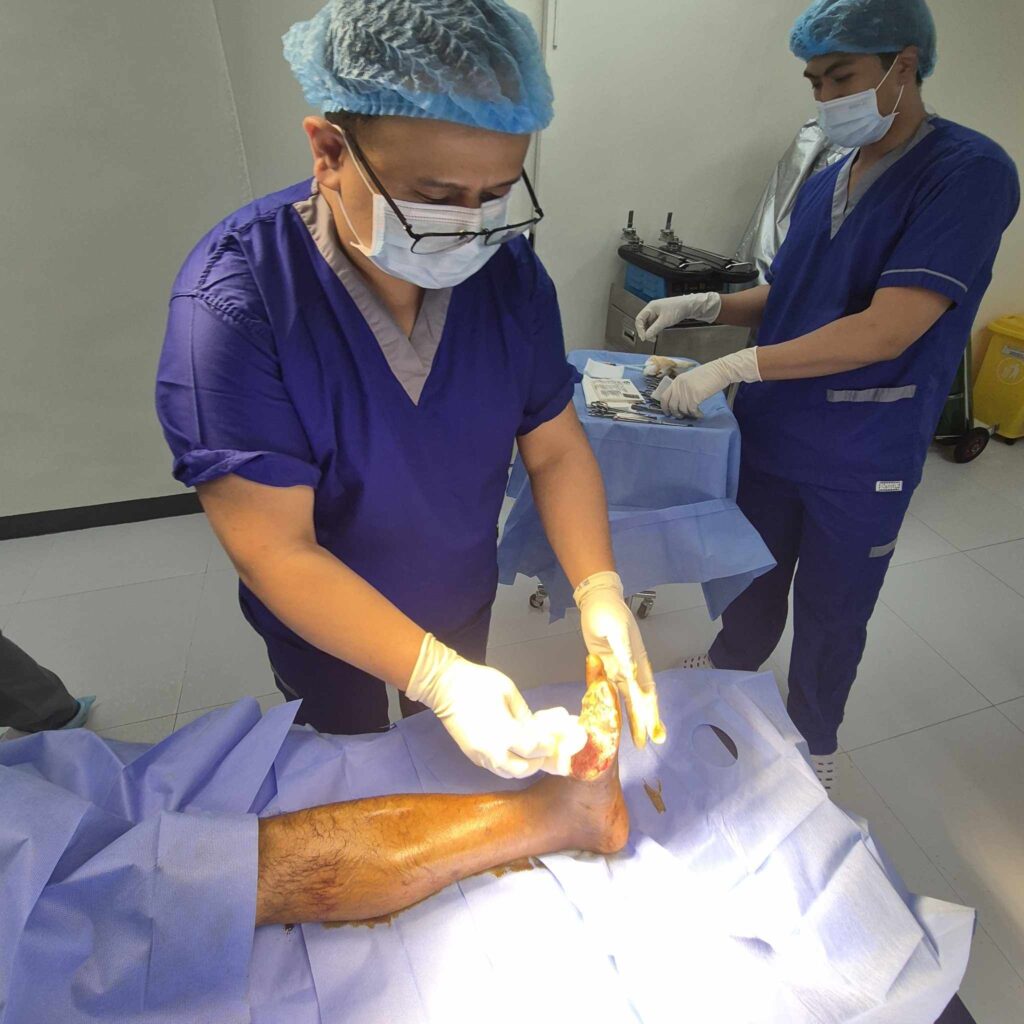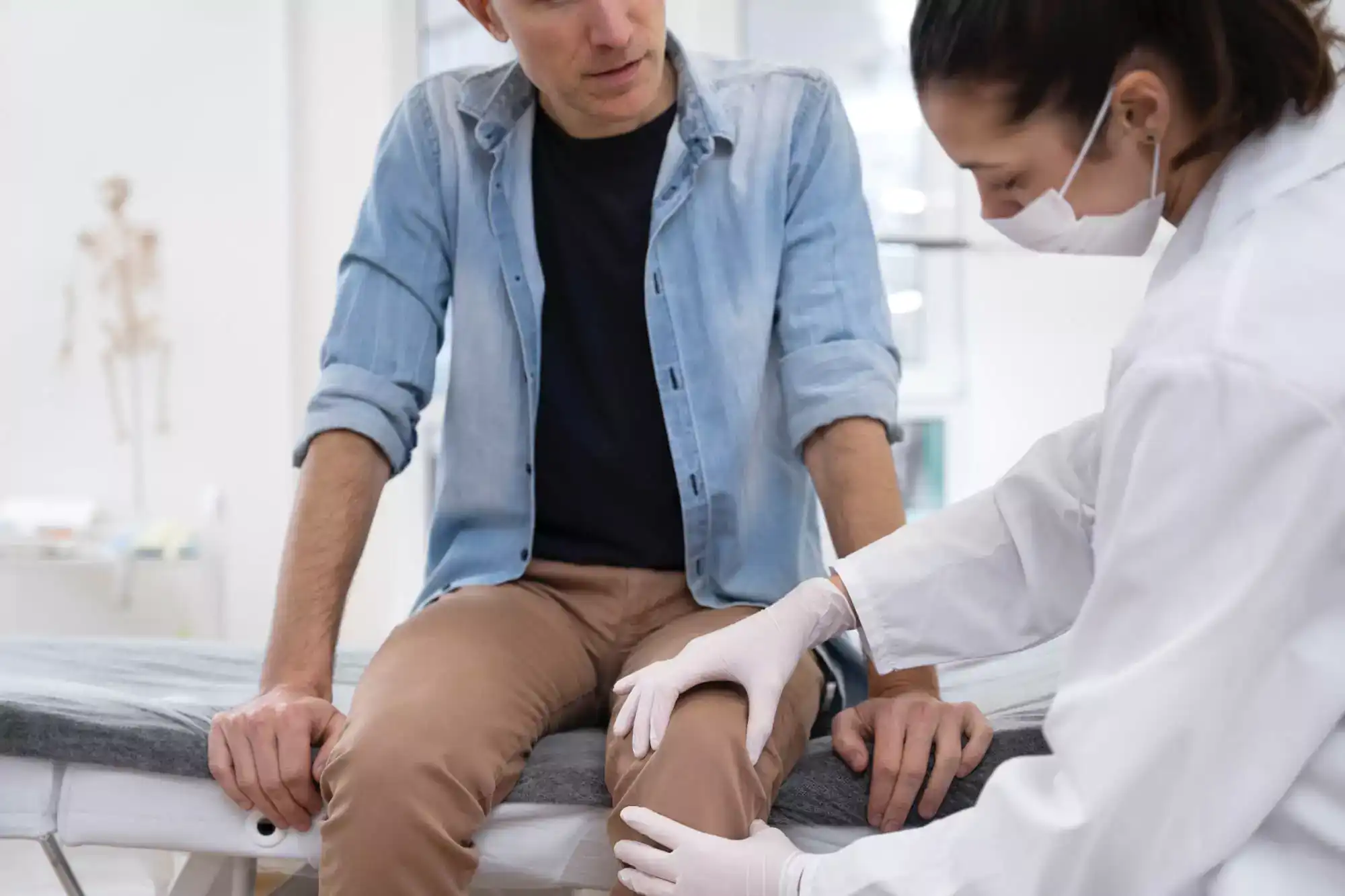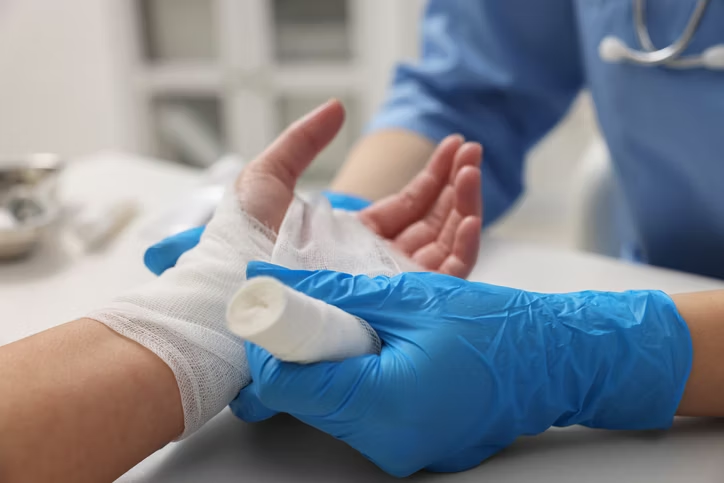What Does a Doctor for Wound Dressing Do?
A doctor for wound dressing specializes in the evaluation, cleaning, and dressing of wounds to ensure proper healing. This includes treating everything from minor injuries to chronic, non-healing wounds. These doctors are trained to recognize the severity of different wound types and to determine the appropriate treatment method based on various medical factors. Unlike general practitioners, wound care specialists focus specifically on wound health, ensuring that patients avoid infections, scarring, and other complications. In many cases, a specialist becomes essential when a wound does not show signs of healing or begins to show symptoms of infection. These professionals often work closely with surgeons, dermatologists, or endocrinologists, particularly when chronic conditions like diabetes are involved. Their care extends beyond the wound itself, looking at the patient’s overall health to support faster and safer healing.
Types of Wounds That Require Professional Medical Attention
Not all wounds are the same—some can be managed at home, while others need expert care. Acute wounds such as deep cuts, lacerations, surgical incisions, or abrasions often require a doctor for wound dressing to minimize risks and improve healing time. Chronic wounds, on the other hand, develop over time and include diabetic foot ulcers, venous leg ulcers, and pressure sores. These wounds often fail to heal on their own and may become infected if not managed correctly. Warning signs that indicate the need for professional wound care include redness, pus, swelling, heat, foul odor, or pain that worsens rather than improves. Individuals with underlying health conditions—like diabetes, vascular disease, or immune deficiencies—should not delay seeing a specialist. Early treatment helps prevent the wound from escalating into a more serious health issue.
How Doctors Assess Wounds Before Dressing
Before applying any dressing, a doctor must assess the wound thoroughly. This process includes inspecting the size, depth, location, and condition of the wound bed. The doctor will check for signs of infection such as discharge, discoloration, and foul smell, as well as the presence of necrotic (dead) tissue. Additional diagnostic tools, like wound cultures or blood tests, might be used to identify bacteria or assess the body’s healing response. The wound is typically classified into stages or types—such as partial-thickness or full-thickness—which helps the doctor decide the appropriate treatment. Pain levels, patient history, and co-existing conditions also influence care. This detailed evaluation ensures the dressing method is safe, appropriate, and tailored to encourage optimal recovery.
Techniques Used by Doctors for Wound Dressing
A doctor for wound dressing uses a variety of techniques based on the wound’s type and severity. Basic steps include cleaning the wound with sterile saline or antiseptics, followed by applying the appropriate dressing. Some wounds require debridement, which involves removing dead or infected tissue to stimulate healing. More advanced options include hydrocolloid dressings that maintain a moist environment, alginate dressings for high-drainage wounds, and foam dressings for cushioning. In certain cases, doctors may employ negative pressure wound therapy, which uses suction to draw out fluid and promote tissue regeneration. These techniques are often combined with topical antibiotics or advanced materials like silver-impregnated dressings. Every technique is aimed at reducing infection risk, supporting skin regeneration, and relieving patient discomfort.
Importance of Timely and Correct Wound Dressing
Proper wound dressing can significantly shorten recovery time and prevent complications. A wound left untreated or dressed incorrectly may worsen, leading to infection, chronic pain, or even systemic illness like sepsis. Timely dressing changes and the right technique ensure that harmful bacteria are kept at bay while the wound environment supports healing. For post-surgical wounds, correct dressing prevents reopening or scarring. For chronic wounds, ongoing medical oversight is essential for tracking progress and making adjustments when healing stalls. Pain reduction is another benefit—appropriate dressings provide cushioning and limit unnecessary exposure to air or movement. By consulting a qualified doctor for wound dressing early on, patients can avoid hospitalizations or surgeries that result from untreated infections or neglected wounds.
Home Care vs. Professional Wound Dressing: What’s Best?
While some minor wounds can be managed at home, there’s a significant difference between over-the-counter care and professional wound management. A doctor for wound dressing understands the complexities of different wound types and the body’s healing process. DIY methods, although convenient, carry risks—such as using non-sterile tools, applying inappropriate ointments, or failing to identify early signs of infection. Chronic wounds or those affecting vulnerable individuals (e.g., the elderly or people with diabetes) should always be monitored by a doctor. Professional care provides not just better materials but also better decisions—such as when to clean aggressively or allow the wound to rest. For long-term wounds, seeing a specialist often results in improved mobility, less pain, and fewer complications. Combining home hygiene with expert care is often the most effective strategy.
What to Expect During a Wound Dressing Appointment
A typical appointment with a doctor for wound dressing includes a thorough inspection of the affected area. The doctor may clean the wound, assess progress since the last visit, and remove any dead tissue. Patients are often asked about their pain levels, mobility, and any changes in symptoms. Depending on the condition, the doctor might use advanced tools or imaging to assess healing from beneath the skin’s surface. The dressing is then applied in a sterile manner, and the patient is given specific aftercare instructions. These may include keeping the area dry, using specific soaps, or avoiding certain physical activities. Regular follow-ups may be scheduled, especially for chronic wounds or if complications are suspected. Patients often find that professional care improves their comfort and boosts their confidence in the healing process.
Qualifications to Look for in a Doctor for Wound Dressing
Not every medical professional has specialized training in wound care. When looking for a doctor for wound dressing, consider those with additional certifications in wound management, dermatology, or vascular medicine. Many wound care physicians hold memberships in professional organizations like the American Professional Wound Care Association (APWCA) or are certified by the American Board of Wound Management. Look for experience treating specific wound types such as diabetic foot ulcers, pressure sores, or post-surgical wounds. Ask whether they stay current with the latest dressing materials and therapies. A good wound care doctor will also work in collaboration with other specialists, especially if the wound relates to a chronic condition. Their ability to communicate clearly, customize care plans, and make patients feel comfortable is equally important as their technical skills.
Cost and Insurance Considerations
Wound care costs can vary depending on the treatment complexity and the number of visits required. A basic appointment may include cleaning, dressing materials, and monitoring, while more complex wounds might need surgical debridement or advanced therapies. Insurance providers often cover medically necessary wound care, particularly for diabetic ulcers, surgical wounds, or infected injuries. It’s important to confirm with your provider what services are included and whether a referral is needed. Clinics specializing in wound care may also offer payment plans for those without insurance. Early care typically reduces overall costs by preventing hospitalization or more aggressive interventions. Patients are encouraged to ask for a cost estimate during the first visit to avoid surprises.
How to Prepare Before Visiting a Wound Dressing Doctor
Preparing for your appointment can improve the effectiveness of the visit. Bring a list of medications you’re taking, any past wound care history, and details about the wound’s development. If possible, photograph the wound progression—this helps the doctor track healing. Wear clothing that allows easy access to the affected area. Avoid applying creams, ointments, or bandages that haven’t been prescribed. Take note of symptoms like swelling, unusual odor, or increased pain so you can report them clearly. If you’re anxious about pain during the appointment, discuss pain relief options with the doctor in advance. Being organized and open during your visit helps the doctor create the best plan for recovery.
Common Mistakes People Make When Dealing with Wounds
Improper wound care often results in prolonged healing or unnecessary complications. One common mistake is using non-sterile or expired materials, which increases the risk of infection. Others apply substances like alcohol or hydrogen peroxide, which may damage healthy tissue. Ignoring early warning signs like swelling or discoloration can allow a small issue to become a larger medical problem. Skipping follow-up visits is another serious error—what appears healed externally may still be vulnerable beneath the skin. Many patients also remove dressings too early or fail to protect the area from additional injury. Taking wound care into your own hands without understanding the full healing process can set you back significantly. Consulting a doctor for wound dressing helps avoid these pitfalls.
Preventive Tips Shared by Doctors for Avoiding Wound Complications
Doctors often emphasize prevention as the best wound care strategy. One of the top tips is to maintain good hygiene, washing your hands before and after touching a wound. For those prone to skin breakdown—like the elderly or individuals with limited mobility—cushioning high-pressure areas can prevent wounds from forming. Diabetic patients should inspect their feet daily, keep blood sugar under control, and wear protective footwear. Nutrition also plays a key role; diets rich in protein, vitamin C, and zinc support tissue repair. Staying hydrated and avoiding smoking can accelerate healing. Wounds should always be covered in clean, dry bandages until a doctor says otherwise. Simple steps like these, advised by a doctor for wound dressing, go a long way in reducing healing time and avoiding complications.
FAQ: Doctor for Wound Dressing
Q1: How often should a wound dressing be changed by a doctor?
A: The frequency depends on the wound type, infection status, and the dressing used. Some may need daily changes, while others can last several days.
Q2: Can I request advanced dressing materials during treatment?
A: Yes. If you believe your wound needs specialized materials, discuss it with your doctor—they may recommend or accommodate your request based on your needs.
Q3: What should I do if my wound becomes painful or swollen between appointments?
A: Contact your doctor immediately. Pain or swelling could indicate infection or poor healing and should be addressed without delay.
Q4: Is it better to go to a clinic or hospital for wound dressing?
A: For most non-emergency wounds, specialized wound care clinics provide effective treatment. Hospitals are best for severe, infected, or post-surgical wounds.
Q5: Are there doctors who specialize only in wound care?
A: Yes. Many physicians dedicate their practice to wound management and hold certifications in this field. These doctors are well-equipped to handle complex or chronic wounds.






